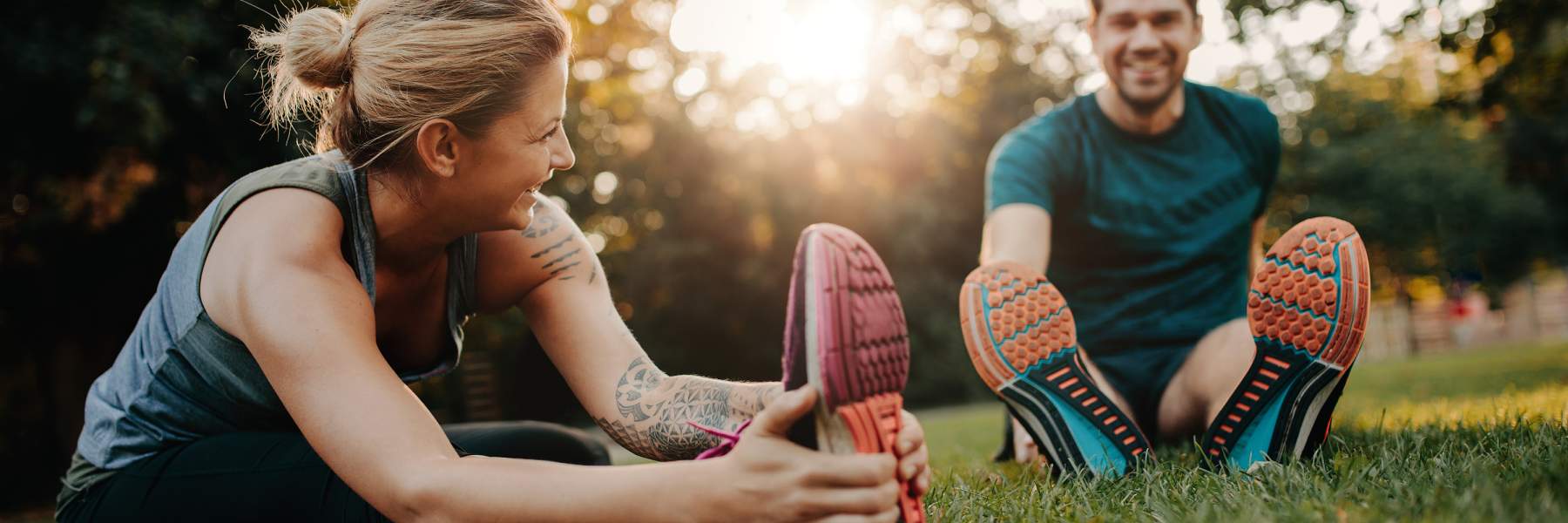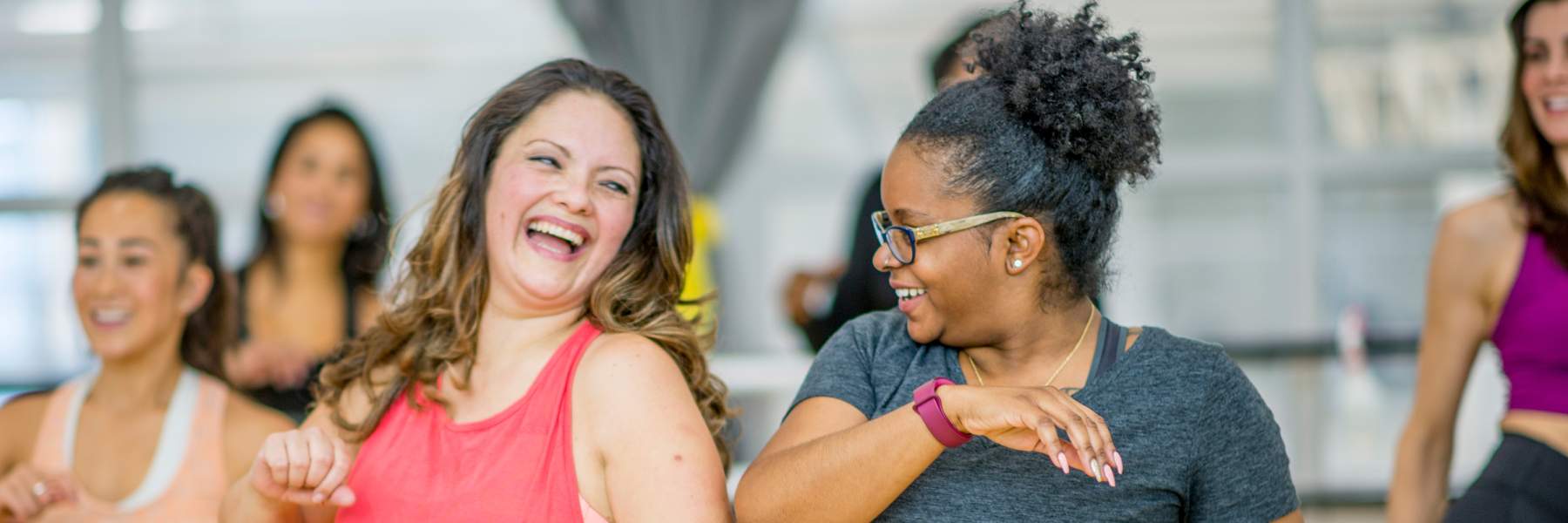Developing a plan to help you manage your endo symptoms through exercise
Exercise can be a scary word that brings to mind images of huffing and puffing, sweating and sore muscles. But it’s not all about high heart rates.
On this page we’re going to deconstruct exercise and talk about how important a varied and nutritious ‘exercise diet’ is for helping manage and improve endometriosis and its related symptoms.
Endometriosis means many of us experience quite severe pain and therefore feel restricted with movement and exercise. Pain is designed to immobilise us, but learning to work with your body when in pain can be an empowering tool to help manage symptoms and stay healthy.
The benefits of exercise are potent and far reaching, for both our body and mind
Our bodies are amazing, complex systems that need regular movement to stay healthy. The benefits of exercise reach all areas of our bodies, making our hearts and lungs healthier, muscles and joints stronger, parts of our brains bigger, and can even help protect our mental health.
Currently there are no specific exercise guidelines for endometriosis. However, scientific studies have shown that exercise can:
- Reduce pain
- Increase levels of anti-inflammatory cytokines
- Reduce estrogen levels
- Reduce insulin resistance
- Release endorphins
Exercise assists with symptom management rather than treatment for the condition itself. People with endometriosis commonly experience a guarding mechanism within the body from pain. This can result in long-term postural changes, meaning some muscles are chronically shorter or longer, weaker and/or feel ‘tight’. This contributes to the pain cycle and might show up as lower back pain, pelvic floor pain and feelings of tightness through the front of the hips, thighs and abdomen, thus affecting how we move, how much we move and what activities we engage in.

Developing a nutritious ‘movement diet’
The term exercise refers to planned, structured activities done to improve health and fitness, like going to the gym, running, swimming, or yoga, while physical activity/movement refers to any bodily movement produced by your muscles. This includes gardening, cleaning, walking to work, or playing with your kids.
Exercise and physical activity are different things but they are both important for keeping us healthy, physically and mentally. While it can be challenging to fit in and stick to an exercise program, just finding ways to create as much movement in your day (and break up sitting) has valuable health benefits.

Include activities from each movement group
The goal is to have a balanced movement diet that includes activities from each of the following groups, ensuring we aren’t movement deficient.
| Movement groups | Examples |
|
|
|
|
| 3. Balance |
|
|
|
|
|
|
|
| Refers to how an exercise is completed. Focuses on the activation and coordination of muscles to complete a movement. Usually requires feedback and learning. |

Creating a movement plan for you
Every body is unique and it can be beneficial to have an assessment with an allied health professional such as an exercise physiologist or physiotherapist who can tailor an exercise program to suit your symptoms, capacity and goals. Find an allied health professional
It can be helpful to consider the following points when creating an exercise program.
| What do I enjoy doing? | Data shows that enjoyment is one of the biggest predictors for sticking to an exercise program in the long run. What factors play an important role in your enjoyment of exercise? |
|---|---|
| Do I enjoy exercising alone or with others? | Sometimes exercise is great personal, self-care time and other times we may use it to socialise. |
| Where do I like to exercise? | Is it outside? In nature? In your home? At the gym? Near the beach? |
| How much do I want to spend on exercise (memberships, equipment, classes etc)? | If you’re on a budget, you can pick up some simple equipment from Kmart and still get in a solid work out, such as foam rollers, therabands, kettlebells, resistance bands, steps, or a yoga mat. A lot of really great content can also be found online. |
| How much time can I realistically allocate per day/week? | This is a big one. What is a realistic, sustainable amount of time for you? Remember to start small as you can always build it up. It might be 10 minutes per day or 30 minutes 4 times per week. |
| What time of day will work best? | Are you a morning person? Or maybe it’s a nice way to end your day. If you like to walk, research suggests walking first thing in the morning can help us feel more alert and calm throughout the day. |
| What are my goals for exercising? | What motivates me? What is important about exercise to me? Some days you’re just not going to feel like doing it, so it’s nice to have these written down and stuck on the fridge or somewhere you can see them. It could be anything from managing symptoms and de-stressing to something specific such as wanting to achieve a goal of walking for 5 kilometres. |
| How will I overcome barriers as they come up? | Predicting what your most likely barriers will be and coming up with some solutions to them when you’re in the planning stage can be a really effective tool for sticking to your plan. Barriers are inevitable; contemplating how you’ll get back on the bandwagon can help with motivation and feelings of self-efficacy. |

How much is the right amount?
It can be difficult to know where to start when you haven’t exercised for a while. It’s best to start small (smaller than you think) and see how your body responds. Unfortunately, flare ups do occur and sometimes too much exercise, too soon, that’s too intense, can be a trigger. Initially, less is more.
Think about your exercise ‘dose’ as a combination of modality, duration, intensity and frequency:
- Modality (type of exercise - walking, weights, yoga etc.)
- Duration (time spent)
- Intensity (low, moderate, high)
- Frequency (how many days per week)
Keeping an exercise journal or log can be helpful when you’re starting out to track how your body responds and to help you find the right dose for you. Start with light intensity exercise (e.g., walking) for a short duration (10-15 minutes) every second day. You can then add in other modalities and increase the intensity or duration as feels suitable. A rule of thumb is to try to increase your dose by no more than 10% from the previous week. Try to change only one thing at a time. That way, if you have a flare up, you know what likely triggered it and you can take that exercise out or change that variable.
It’s important to note that other lifestyle factors influence our responses to exercise. For example, sleep, diet, menstrual phase and stress levels can impact how much exercise dose we can tolerate. The golden advice here: listen to your body. Adapt your program as you need.
Tip: Frequency is important, you can expect greater outcomes from doing 10 minutes every day, than doing 60 minutes once per week. Bodies love consistency!
An example Movement Plan
Below is a list of exercises to choose from and try. There are four main categories - you might like to choose one from each category to do each day or perhaps focus on one category per day. See what works for you!
Stocking your movement pantry means you’ll have a variety of options to choose from each day or week depending on what your body needs and what you feel like doing.
| Light intensity stretch/release | Light-moderate intensity strength & stability | Aerobic | Relax & down-regulate |
|---|---|---|---|
| Deep squat x10 | Hip bridges (with posterior pelvic tilt) x10 | 20 min walk | 5x diaphragmatic breathing |
| Wide leg forward fold 60s hold | 4 point kneeling alternate arm/leg reaches x10 | 20 min swim | 5x lateral costal breathing |
| Half kneeling hip flexor/quad stretch x10 | Abdominal leg loads x10 | 20 min bike | 2 min bridge over bolster |
| Side lying thoracic rotations x10 | Squats x10 | 10 min row | |
| Pelvic tilts (anterior, posterior, rotation, lateral flexion) x10 | Single leg hinge x10 | ||
| Child’s pose 60s hold | Upper and lower limb rolling patterns x10 | ||
| Trigger ball release deep pelvic muscles 2 min | Forearm plank 30s hold |
Key take home messages:
- Start small and build up slowly over time.
- Monitor how you respond to various types, amounts and intensities of activities.
- It’s important to stretch, strengthen and stabilise our tissues! Find a balanced movement plan that works for you.
- Health professionals such as physios and exercise physiologists are qualified to help you find the right exercise program and support you on your exercise journey.
 Skip to main content
Skip to main content